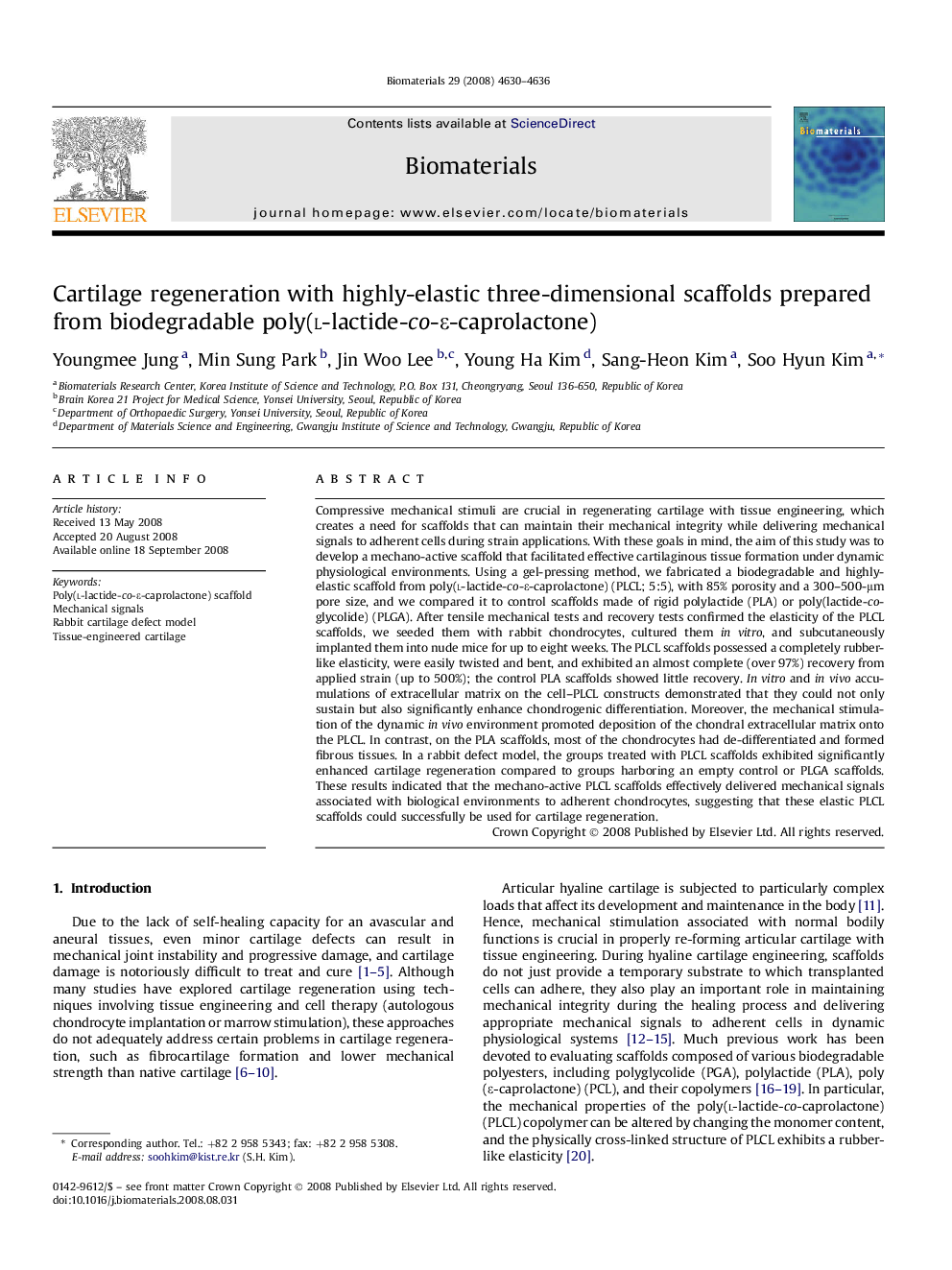| کد مقاله | کد نشریه | سال انتشار | مقاله انگلیسی | نسخه تمام متن |
|---|---|---|---|---|
| 9558 | 636 | 2008 | 7 صفحه PDF | دانلود رایگان |

Compressive mechanical stimuli are crucial in regenerating cartilage with tissue engineering, which creates a need for scaffolds that can maintain their mechanical integrity while delivering mechanical signals to adherent cells during strain applications. With these goals in mind, the aim of this study was to develop a mechano-active scaffold that facilitated effective cartilaginous tissue formation under dynamic physiological environments. Using a gel-pressing method, we fabricated a biodegradable and highly-elastic scaffold from poly(l-lactide-co-ɛ-caprolactone) (PLCL; 5:5), with 85% porosity and a 300–500-μm pore size, and we compared it to control scaffolds made of rigid polylactide (PLA) or poly(lactide-co-glycolide) (PLGA). After tensile mechanical tests and recovery tests confirmed the elasticity of the PLCL scaffolds, we seeded them with rabbit chondrocytes, cultured them in vitro, and subcutaneously implanted them into nude mice for up to eight weeks. The PLCL scaffolds possessed a completely rubber-like elasticity, were easily twisted and bent, and exhibited an almost complete (over 97%) recovery from applied strain (up to 500%); the control PLA scaffolds showed little recovery. In vitro and in vivo accumulations of extracellular matrix on the cell–PLCL constructs demonstrated that they could not only sustain but also significantly enhance chondrogenic differentiation. Moreover, the mechanical stimulation of the dynamic in vivo environment promoted deposition of the chondral extracellular matrix onto the PLCL. In contrast, on the PLA scaffolds, most of the chondrocytes had de-differentiated and formed fibrous tissues. In a rabbit defect model, the groups treated with PLCL scaffolds exhibited significantly enhanced cartilage regeneration compared to groups harboring an empty control or PLGA scaffolds. These results indicated that the mechano-active PLCL scaffolds effectively delivered mechanical signals associated with biological environments to adherent chondrocytes, suggesting that these elastic PLCL scaffolds could successfully be used for cartilage regeneration.
Journal: Biomaterials - Volume 29, Issue 35, December 2008, Pages 4630–4636